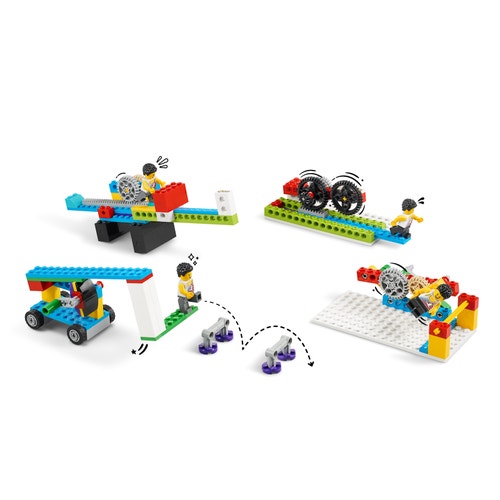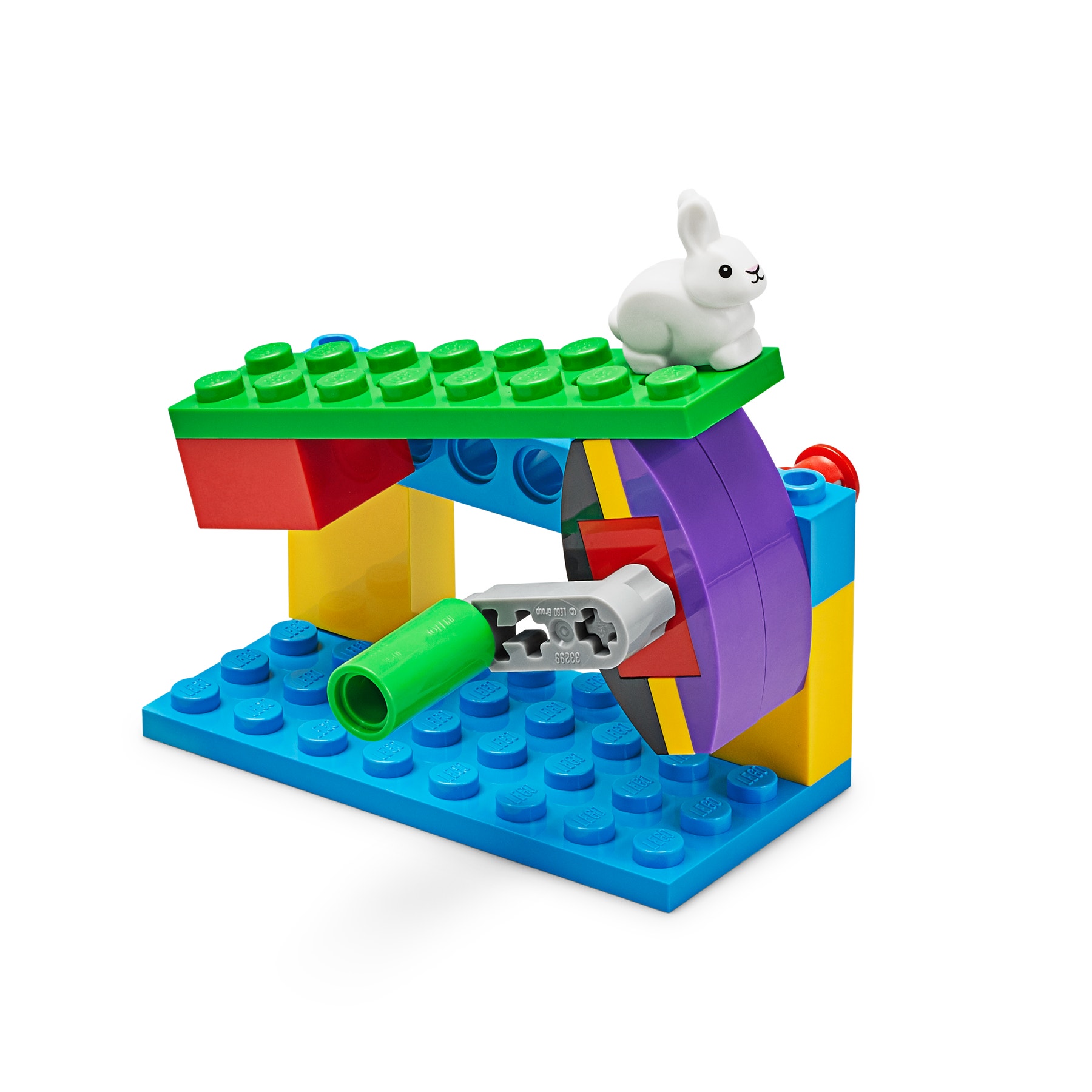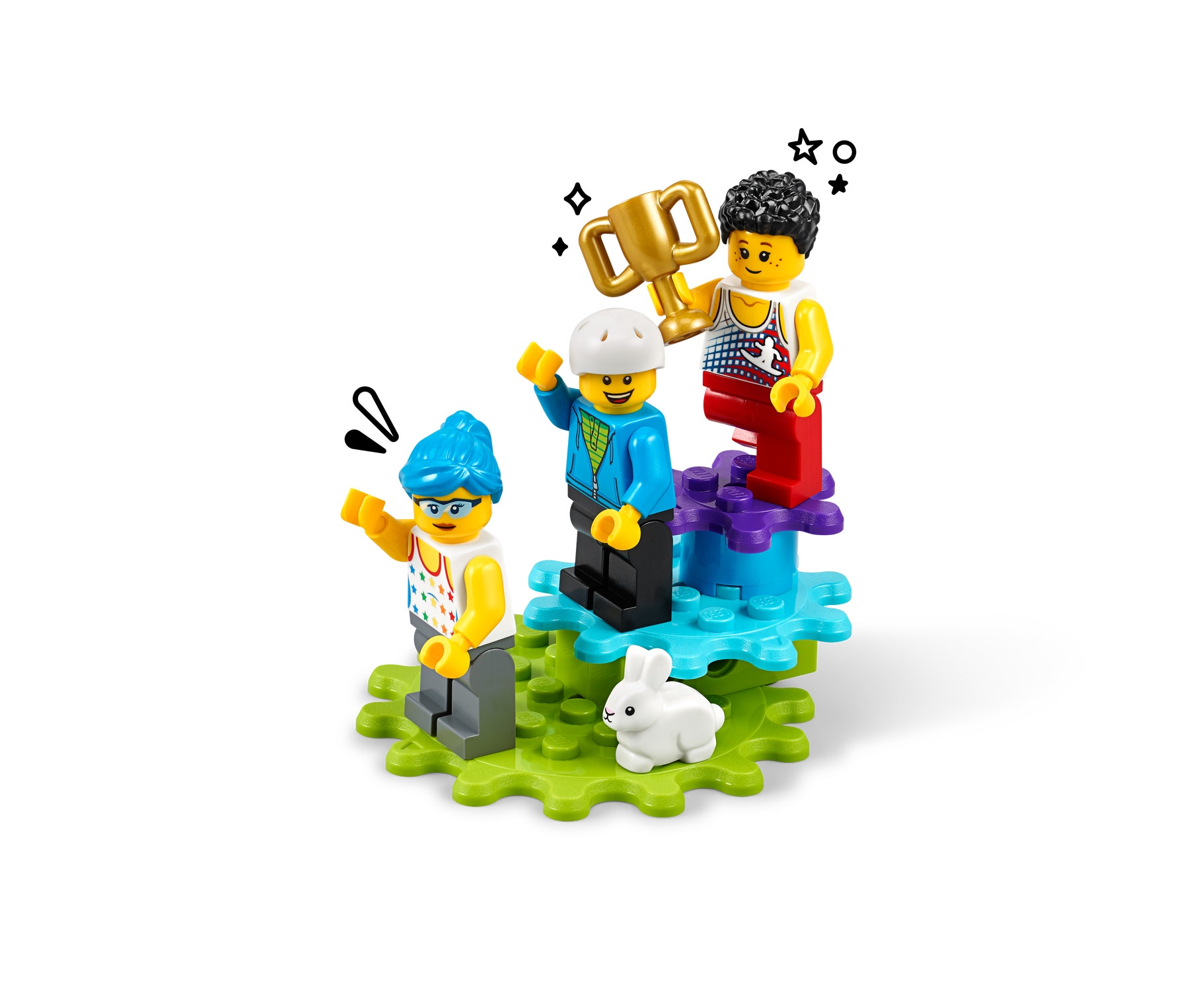Track and Field
Which can you do best? Running, jumping, or throwing? Let us get out onto the track and find out!

Prepare
- Review the online pupil material. Use a projector to share this material with your pupils during the lesson.
- Make sure that you have covered the relevant concepts (i.e. push and pull forces) in an earlier lesson.
- Consider the abilities and backgrounds of all your pupils. Differentiate the lesson to make it accessible to everyone. See the Differentiation section below for suggestions.
Engage
(Whole Class, 5 Minutes)
- Watch the pupil video here or access it via the online pupil material.

- Facilitate a quick discussion about which forces are involved in running, jumping, and throwing during track and field events.
- Ask questions like these:
- Which forces are needed to make the athletes move when they are doing track and field events? (Athletes push with their bodies, using their muscles to run, jump and throw.)
- Tell the pupils that they’re going to build a mechanism that can represent a track and field event. Explain that they will not be given building instructions but should instead use the pictures on pages 2-3 in their building instructions books to guide them.
- Explain that each group:
- Can copy the models that are shown in the pictures on pages 2-3 of the building instructions book, develop them or invent their own designs
- Should aim to make at least 2 track and field event models with moving parts
- Distribute a set to each group.
Explore
(Small Groups, 30 Minutes)
- Have the pupils work in pairs to design and build their models.
- Note: There are not specific building instructions for this lesson. However, the pupils can refer to the pictures on pages 2-3 of the building instructions book for inspiration. They are also welcome to design their own models.
- You can find building help in the Tips section below.
- Encourage the pupils to test their models when they have finished building.

Explain
(Whole Class, 5 Minutes)
- Gather your pupils together to share what they have built.
- Ask questions like these:
- How did your models represent the events that you chose? (e.g. move fast, make something jump, etc.)
- Which forces, or types of forces are at work in your model? (e.g. push, pull, balanced, unbalanced, gravity)
Elaborate
(Whole Class, 5 Minutes)
- If time permits, have the pupils try each other's models.
- Allow time for the pupils to disassemble their models, sort the bricks back into the trays and tidy up their workstations.
Evaluate
(Ongoing Throughout the Lesson)
- Ask guiding questions to encourage them to ‘think aloud’ and explain their thought processes and reasoning in the problem-solving decisions they have made during the challenges.
Observation Checklist
- Measure your pupils’ proficiency in describing the forces that are at work in their models.
- Establish a scale that suits your needs. For example:
- Requires additional support
- Can work independently
- Can teach others
Self-Assessment
- Have each pupil choose the brick that they feel best represents their performance.
- Green: With some help, I can describe the forces that are at work in my model.
- Blue: I can describe the forces that are at work in my model.
- Purple: I can describe and explain the forces that are at work in my model, and I can help a friend to understand, too.
Peer Feedback
- In their teams, have the pupils discuss their experiences working together.
- Encourage them to use statements like these:
- I liked it when you…
- I'd like to hear more about how you…

Tips
Model Tips
- This image shows 4 models that the pupils can use for inspiration.

Differentiation
Simplify this lesson by:
- Assigning each group a specific inspiration model to build as a starting point
- The cam arm and gear train models are great choices because these mechanisms can easily make something move
Increase the difficulty by:
- Having the pupils decorate and add character to their models using the extra bricks to give it a sporting theme
- Choosing a random element and challenging your pupils to find a way to use it in a model
- Challenging your pupils to combine 2 or more different mechanisms into a single complex model
Extensions
(Note: This will require additional time.)
The pupils can calculate the amount of space that is required for their models on a tabletop athletics field by multiplying the lengths of its sides to find its area. Have them work out how big the tabletop athletics field would have to be in order to fit everyone's models.
ACMMG290
Compare objects using familiar metric units of area and volume
ACMMG109
Calculate perimeter and area of rectangles using familiar metric units
1:1 Hybrid Learning
Download the Personal Learning Kit lesson plan from the hybrid learning resources.
Teacher Support
The pupils will:
- Become familiar with using this set to build moving models
- Explore how pushing and pulling affects a mechanism’s motion
- Predict how the forces acting on an object can change its motion
- LEGO® Education BricQ Motion Essential Sets (one for every two pupils)
National Curriculum
Sc3/4.2a
Compare how things move on different surfaces
Sc3/4.2b
Notice that some forces need contact between 2 objects
En4/1b
Ask relevant questions to extend their understanding and knowledge
En4/1d
Articulate and justify answers, arguments and opinions
En4/1e
Give well-structured descriptions, explanations and narratives for different purposes
En4/1g
Use spoken language to develop understanding through speculating, hypothesising, imagining and exploring ideas
DT2/1.1a
Use research and develop design criteria to inform the design of innovative, functional, appealing products that are fit for purpose, aimed at particular individuals or groups
Ma3/3.1a
Measure, compare, add and subtract: lengths (m/cm/mm)
Ma4/3.1d
Estimate, compare and calculate different measures
Ma4/2.3e
Solve problems involving multiplying and adding, including using the distributive law to multiply two digit numbers by 1 digit, integer scaling problems and harder correspondence problems such as n objects are connected to m objects.




